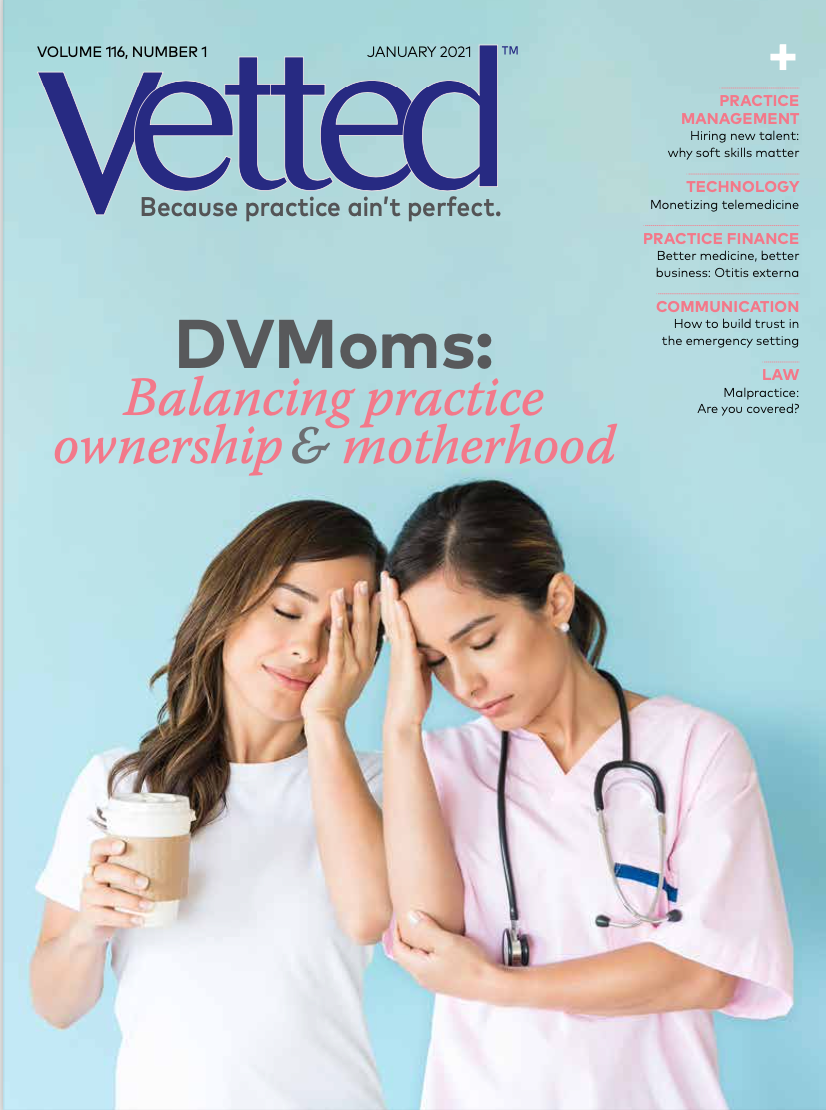5 Marketing musts for every veterinary hospital
Want to build brand awareness and increase your patient roster? Here are the 5 things you (or an affordable marketing person) should be doing.
BillionPhotos.com/stock.adobe.com

Brand awareness is vital for the success for any company, including veterinary practices. But the reality is that most practice owners and managers don’t find the time for marketing. This work demands time, money, and regular monitoring to make sure it’s yielding positive results. Multi-pronged, sophisticated marketing tactics require significant input from the management team (always in short supply). Trying to get it all right slows down the whole process. My recommendation is to focus on a limited number of channels, giving the most attention to those that complement each other and yield the best returns.
Here are what I see as the best digital marketing tips for veterinary practices. Hit some aspect of these 5 throughout your year, and you’ll be in good shape.
1. Search engine marketing
Search engines decide what pet owners see when they go online to find a veterinary practice in their area. Search engine optimization (SEO) is the most important part of that process. In competitive markets, there’s a first entrant advantage that veterinary practices starting on this later need to counter tactically.
But SEO can cut both ways. If the tactics are appropriate and the message is appealing, you can get fantastic results in terms of new clients. But if you’re spending a lot of money in competitive environments, graduating to a higher website ranking and showing up earlier in search results can be a very slow process. SEO should be both on page and off page.
On-page SEO—what appears on your individual web pages—involves posting visually attractive, quality content and ensuring that your words are pithy and free of unnecessary repetition. Great care should be given to the process of tagging. Meta tags facilitate viewing for both search engines and pet owners, and offer a favorable experience once someone clicks through to a particular page on your website. Every page should have both a title tag (preferably fewer than 55 characters) and a meta description (preferably fewer than 150 characters). Structure your website and web page headings (H1) and subheadings (H2 and so on) carefully. you don’t want too many—just enough to honestly and helpfully highlight key aspects of your brand. Internal linking should be minimal (don’t go crazy with hyperlinks to other pages on your own website), and the site needs to be mobile-friendly (which makes sure it looks good on any size tablet or smartphone).
Off-page SEO—which includes links to and from other reputable websites—should involve plenty of backlinks, especially to reputable ones such as educational and government domains. It’s better to have a few quality links to other websites than lots of low-ranking ones.
Does this all sound overly complicated? Well, somebody you or a talented team member or an outside consultant or an outside service—needs to think about it. It’s not as hard it sounds, but it takes a bit of time to learn and understand.
2. Pay-per-click advertising
This is advertising placed in search engines (eg, Google, Bing). Every time a viewer enters the relevant keywords or search phrases, the search engine results pages show up with your ad displayed. If the viewer clicks on your ad—moving to your website—you pay a charge. There are a number of pay-per-click options for you or your marketing person to choose from. a paid search can yield faster results than organic search. These ads are flexible and can be scheduled to be turned on and off so you advertise when you want.
3. Social media marketing
Social media can enhance brand awareness, but the question is which platforms should you use? you need a presence on Facebook, but it could help to survey your current clients to find out where they are. Maybe they want to hear from you on Twitter. Maybe they want to see cute pet pictures (like theirs!) on a Pinterest board or Instagram.
The great thing about social media is that these platforms have access to users’ geographic location, age, gender, and interests. That makes it easier for advertisers (like you) to target audiences, and those interactions on the platform can provide testimonials as well.
Remember, though, digging into social media and building a presence on any platform isn’t just about throwing up some ads. at least 1 team member needs to be somewhat active. This takes time and effort as well as a sensitivity to the fact that social media users get irritated with pitches. your content needs to be heavily focused on interesting facts, pictures, videos, and helpful resources, distracting users from the overall pitch that you are the best veterinary hospital in the area and they’ve just got to swing through your doors.
4. Email marketing
Email continues to be a useful direct strategy to address prospects and nurture existing clients. It’s best to schedule promotional and educational messages with specific “calls to action” you need to inspire the email reader to do something after seeing your message.
Email marketing allows for specific messages for distinct categories, tailoring your pitch to different segments of your clientele or other locals if you’re paying to use someone else’s email list. Emails also allow for “word-of-mail” cascade for the brand, just as word-of-mouth publicity does for you now.
5. Public relations
Would it be worth it to build a multimedia public relations (PR) campaign or contract with someone to do that for you? a multimedia PR thrust under the aegis of a reputable PR organization can definitely create a high level of brand awareness. If affordability is an issue, there are tools available that allow you to run your own in-house PR campaign, and it’s likely your local competitors don’t use them yet. Popular PR software tools allow you to write a press release and share your news with reputable news websites (eg, PressCable and PrWeb), enhancing brand awareness and developing valuable backlinks to your veterinary website.
The bottom line
As the veterinary marketplace becomes more competitive, it’s harder and harder to ignore marketing efforts. Practice owners and managers should learn a little about digital marketing and then decide how deep to go themselves with or without outside help. But if you include these 5 items in your marketing strategy over the months and years, you’ll be way ahead of most of your local competitors for a long time to come
Naren Arulrajah is president and CEO of Ekwa Marketing, a complete internet marketing company that focuses on SEO, social media, marketing education, and online reputations for practice owners.
